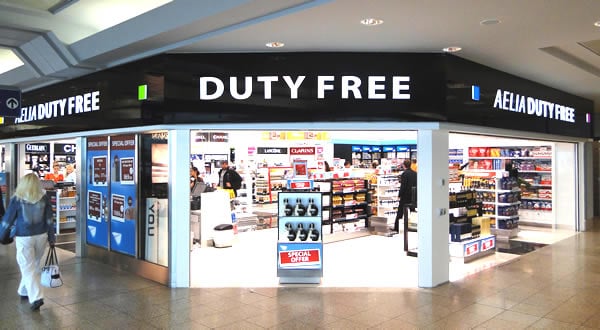
Melissa Minkow, Director, Retail Strategy at digital consultancy, CI&T:
2022 saw a focus on data sharing and innovation for retail. However, with inflation continuing to soar and the cost-of-living crisis deepening, in 2023 the spotlight will be on the consumer and meeting their needs in the most pragmatic ways possible. Consumers will be spending their money carefully, and retailers must look to ensure customer loyalty through reliability and delivering on promises. Here are some key predictions for the year ahead.
The calm after the storm
Now that some of the supply chain crisis is beginning to calm, retailers are increasingly facing excess inventory, meaning extra warehouse storage costs. Add to these inflationary pressures, and brands are still being squeezed in many places. Discounting to shift old stock is nothing new, but slashing prices isn’t sustainable in the long-term, especially in recession.
In 2023, we’ll see more retailers turn to pre-ordering as a way to better manage inventory. This is extremely cost-effective since it allows retailers to gauge interest up front, even before production begins. In the UK there’s more comfort and embrace around pre-ordering compared with other countries, and we’re already seeing considerable uptake, especially amongst smaller retailers where cutting these costs can make a huge difference on profit margins.
Haggler’s market
The new year will hail a ‘haggler’s market’ as retailers look for new ways to compete on price. We’ll see increased adoption of price negotiation tools between consumers and chatbots, where every customer is offered a different, individualised price based on how good they are at negotiating. Over time, this can smooth out any inconsistencies in pricing for the retailer, so they don’t end up losing out.
This will be a big stepping-stone for brands. Globalisation and higher levels of consumer demand mean traditional demand forecasting models are no longer as effective as they once were. Dynamic individualised pricing has huge potential, as long as companies are transparent with their customers on how or when they can obtain the best – similar to Uber’s ‘surge pricing’, where the company has openly communicated about higher costs during busier periods. Retailers may even start to be more open with sharing the number of units of items that are currently available, so consumers can make more informed purchasing decisions. In 2023 and beyond, stock market pricing on items could well become a reality, where prices are raised when demand is high.
‘No frills’ purchasing
With the cost-of-living crisis in full force, in 2023 we’ll see consumers increasingly embrace a ‘no frills’ outlook with spend. Excessive spending has become a thing of the past and more consumers – even those not so affected by the crisis – are cutting costs where they can, opting for cheaper discount supermarkets and cancelling subscriptions. In reaction, we’ll likely see retailers place more emphasis on basics ranges to attract consumers. Mid-priced clothing retailers, for example, will likely introduce more simplistic offerings and focus on staples for people’s wardrobes, versus quickly obsolete, trend-driven pieces. Consumers are already questioning the value of fast fashion, as they turn to more sustainable, long-lasting purchasing options.
The pendulum swings back to brick-and-mortar
Consumers may be cutting back on spend but the joy is not lost from the in-person shopping experience. After the rise of eCommerce during the pandemic, in 2023 we’ll see the pendulum swing towards brick-and-mortar as brands look for ways to appeal beyond price point. There is huge opportunity for brands to stand out by creating store environments that people can really enjoy, even if they don’t have a huge budget – after all, the experience of window shopping is free. Amidst rising prices and energy bills, just getting people into the store should be seen as a big victory in the year ahead, and will play a key role in creating long-term brand loyalty.
Innovation turns pragmatic
CX-driven innovation in retail has largely been put on hold as retailers focus on mission critical investment and cost-cutting. That’s not to say that brands won’t be looking to innovate at all. Rather, in 2023 this will be very pragmatic, with a focus on supporting the customer – for example, equipping them with decision support and the right tools to feel like they’re being smart about purchasing decisions and getting the best price they possibly can. Customer data including consumer insights and personalisation will still play an important role in creating the most efficient retail models, but we’ll see a move back to old school tech objectives – for example, a greater focus on inventory data, including what products need to be moved and at what prices.
Fast fashion reborn
With retailers like Selfridges and John Lewis already paving the way on rental services, we can expect more to follow suit in 2023 to the point where this will start becoming the norm. Not only are rental models a more sustainable and cost-effective option for customers, they also mean companies can collect more data, which would have previously been lost. Rental also reduces waste on the retailer’s part and creates the potential to double down on profits for the same item – not to mention increasing foot traffic, since rent turnover is more frequent than buying turnover for customers.
This could lead to a reimagining of fast fashion. With consumers renting more, retailers can continue to build up a strong picture of what people do and don’t like, to keep on top of changing trends. It’s also a strong solution for inventory management – since there’s a revolving door for items where stock is constantly being swapped in and retailers aren’t repeatedly adding new items, helping to reduce overheads. It also means brands don’t have to worry about a discounting scheme and prices can remain the same month to month, which is a win-win for both the brand and the consumer.
2023 will bring things back to basics. Consumers will be most concerned about value for money, and even savvier with their purchasing decisions. Retailers must keep delivering on consumers’ expectations while innovating along pragmatic lines. As the cost-of-living crisis deepens, rental services and negotiation tools will introduce new territory for shopping. Brands that thrive will be the ones that listen to their customers and show reliability and support through these tough times ahead.








Share